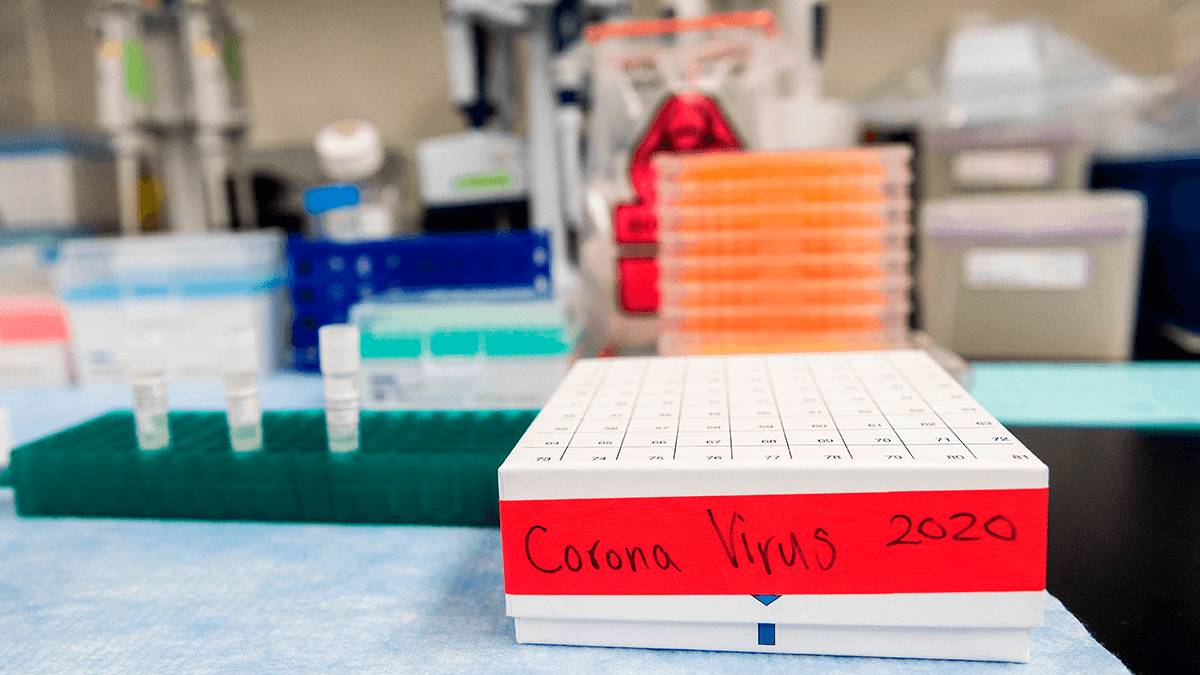
A new way of developing vaccines for Covid-19 could help the world to prepare for future outbreaks
Vaccines are one of our greatest tools to protect against infectious diseases and the world waits with bated breath for a vaccine against coronavirus (Covid-19). The wait might be much shorter if we can hone new methods of vaccine development.

Although it has been just nine weeks since scientists around the world received the genetic code for Covid-19, a phase 1 clinical trial for a vaccine (mRNA-1273) has already begun. This timescale from genomic sequence to clinical trial is unprecedented in vaccine development.
Through a collaboration between Moderna, the US National Institute of Allergy and Infectious Disease (NIAID) and the Coalition for Epidemic Preparedness Innovations (CEPI), the safety and immune response elicited by the vaccine will be assessed over the coming weeks in a small clinical trial involving 45 people. The trial is the critical first step in understanding whether the vaccine could protect people against Covid-19 infection.
This vaccine, unlike traditional vaccines, has been developed using ribonucleic acid (RNA) technology. If successful, the cutting-edge method could revolutionise vaccine development for future disease outbreaks.
RNA is present in all living cells and is important in the manufacture of proteins necessary for cell function. An RNA vaccine would work by hijacking the proteins in our cells to replicate a version of a virus protein which our bodies can mount an immune response to, for example by producing antibodies or a cellular response. This would prepare our immune system should we encounter the real virus later on.
RNA vaccine development is a very promising field but has yet to yield a licensed product. A major challenge has been figuring out how to deliver the RNA vaccine into the cell so it survives – our bodies naturally want to destroy foreign RNA molecules.
So, if we don’t know whether it works yet, why are we focusing on new technologies when we have years of experience with other vaccine approaches?
Over the past few decades we’ve seen changes in the spread of infectious diseases caused by factors such as increased urbanisation, a more interconnected world and global warming. This has highlighted three problems with traditional vaccine development and manufacture:
- Time – remains a major barrier to vaccine development for epidemic diseases. It usually takes 10 years or more to achieve a licensed vaccine, which is far too long to help tackle a new outbreak.
- Cost – is equally important and intimately linked to time. It usually costs more than $500 million to develop a vaccine and license it. Vaccines for epidemics face the extra burden of not having a guaranteed market long term – like the vaccine for measles, mumps and rubella (MMR) – so making the economic case for investment is twice as hard.
- Scalability – any vaccine being developed is only useful if enough doses can be manufactured to protect those at risk. A huge number is required for Covid-19 and global vaccine manufacturing capacity may not be sufficient.
The future of vaccine development
RNA vaccine development holds the promise of being faster, cheaper and more scalable because the vaccines:
- can be generated quickly – RNA vaccines are based on a process of biochemical synthesis that involves fewer components and steps in the ‘recipe’ compared to more complex traditional methods, for example the inactivation of live viruses. This means they are quicker getting to trials and quicker to manufacture once the trials have been completed and their safety and efficacy has been proven. They have the potential to be ready for patients in a matter of weeks and months, rather than years.
- are cheaper to develop – only a small amount of RNA is required to be delivered into the body’s cells compared to the much larger micrograms of protein that are required for many traditional vaccines. This means each individual vaccine will be cheaper to purchase, making it much more accessible.
- are easier to manufacture at scale – if safe and effective, the same RNA vaccine core could be used with RNAs for different emerging infectious diseases, like Covid-19. This means that the manufacturing set-up is scalable and can, in theory, be easily changed for any virus.
My hope is that the funding and focus going into vaccine development for Covid-19 will allow breakthroughs of these new technologies. If we can hone new methods of development, we’ll be much better prepared for any future outbreaks and able to save more lives with vaccines, faster.
That is why the urgent funding gaps in the global response to Covid-19 must be addressed. Only through appropriate funding can innovations like this RNA vaccine trial be made possible.


